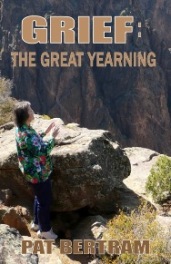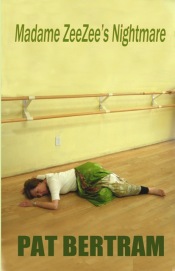I talked to a friend today about the various problems we are facing in this, our fourth year of grief, and she said, “It is what it is.”
Robert Hartwell Fiske calls such sayings “quack expressions,” saying they “readily explain behavior that the dimwitted otherwise find inexplicable, and justify attributes that they otherwise find unjustifiable.”
He’s right to a certain extent, and yet . . .
My friend is anything but dimwitted. She, like me, is struggling with life, death, grief, change, and other life experiences that are inexplicable to everyone, dimwitted, brightwitted, or somewhere in between. Sometimes it truly is what it is, quack expression or not.
Desp ite what the positive thinkers and those who believe we create our own reality profess, much of life is beyond our control. We don’t decide who lives and dies. We can’t choose who we love or despise (though we can choose what we do with those feelings). We can’t always help people who need to be helped. We can’t hurry along or slow down natural processes, such as childbirth or old age. Nor can we recreate the world to suit our desires. The sun always rises in the eastern sky and sets in a westerly direction. The moon always affects our world, though myths tell of a time before the moon came to stay. And, as they say, time and tide wait for no man. (Though I suppose, being a woman and not a man, I should be able to sway such natural phenomena.)
ite what the positive thinkers and those who believe we create our own reality profess, much of life is beyond our control. We don’t decide who lives and dies. We can’t choose who we love or despise (though we can choose what we do with those feelings). We can’t always help people who need to be helped. We can’t hurry along or slow down natural processes, such as childbirth or old age. Nor can we recreate the world to suit our desires. The sun always rises in the eastern sky and sets in a westerly direction. The moon always affects our world, though myths tell of a time before the moon came to stay. And, as they say, time and tide wait for no man. (Though I suppose, being a woman and not a man, I should be able to sway such natural phenomena.)
It is what it is.
Lately, I’ve been struggling with a couple of situations that are not of my making, that I have no control over, that don’t affect me in a primary way (besides tearing me apart by conflicted loyalties). I can’t solve any of the problems that have arisen, can’t walk away from them, can’t change anything. All I can do is realize each situation is what it is, and let it go as best as I can. (It helps to realize that in a case of divided loyalties, my loyalties belong to myself.)
In my writing, of course, I stay away from such expressions since I like my writing to have a tinge of elegance, but life is not always elegant.
It is what it is.
***
Pat Bertram is the author of the suspense novels Light Bringer, More Deaths Than One, A Spark of Heavenly Fire, and Daughter Am I. Bertram is also the author of Grief: The Great Yearning, “an exquisite book, wrenching to read, and at the same time full of profound truths.” Connect with Pat on Google+. Like Pat on Facebook.









August 25, 2013 at 7:17 pm
One day I’d like to write a story where, at some point in it, a character just rips that whole expression to shreds in their anger or philosophical musings or something. I hope that story comes soon.
By the way, I’m taking a sociology course right now, and according to the textbook, aphorisms like “it is what it is” are some of the biggest obstacles to thinking like a sociologist. What a great way to apply my lessons by reading your post.
August 25, 2013 at 7:21 pm
I can see why such expressions aren’t acceptable to a sociologist — sociologists believe they can change things, otherwise they wouldn’t become sociologists. And yet, some things simply exist in and of themselves, immutable.
August 25, 2013 at 7:25 pm
Like death, taxes, and idiots in Congress.
August 26, 2013 at 6:08 am
How I want you to meet the I AM, who is Who He is. You are a fantastic thinker, Pat. I like your blog. Logic is what it is, and serves us well, as long as there are no significant pieces of information missing. When you see Jesus, when you meet Him, you will have one huge missing piece of the puzzle that will change your view of everything. You will know that you are loved and cared for, and you may know what you really want for the rest of your life. And you will know that all good things are available to you. No, I don’t believe we create our own reality. I believe there is One who can change anything for us. God is good. You are the apple of His eye. Blessings to you, Pat.
August 26, 2013 at 3:48 pm
Thank you, Carol. I always appreciate your blessings.
August 26, 2013 at 9:50 am
Pat, I dislike these catch-all phrases, too, but the idea is right. We have what we have and must make the best of the life on our own. It’s been 5 years since my husband/best friend/confidant/companion died, and there is growing joy and new possibility–and a continuing longing and pull toward the past. So I move forward each day carrying the grief with me, looking for open doors and glimmers of light. It’s a good life. Not the one I wanted, but good enough. I can’t name who creates the circumstances, but it’s clear I’m not in charge of what happens but am responsible for my reactions and what I build from the rubble.
August 26, 2013 at 3:46 pm
I’ve never used such expressions, but for some reason, yesterday it seemed right. It’s harder to deal with situations such as death if you think you can change the outcome or if you blame yourself. You can’t. As you say, you are only responsible for your reactions and what you can build from the rubble.
August 27, 2013 at 12:17 pm
I think using that expression helps one move away from over thinking and worrying about things that can’t be changed. Sometimes I need to remind myself that I can’t fix everything, and there are some things that should just be let go.
August 27, 2013 at 12:20 pm
It isn’t so much acceptance, but realizing that you are wasting energy on things you have no control over. Becoming aware of it.
August 27, 2013 at 1:43 pm
Yes, this is what I understood when I heard the phrase the other day — not to waste energy on things you have no control over. And there are so many things we have no control over!
July 8, 2018 at 7:12 am
For me “It is what it is…” is a statement to use when I need a resting place emotionally,mentally or spiritually. It also can be for me a bit of a disclaimer! A way of saying “Here’s what I think or feel or believe today but it might (actually probably will change) so take my view as: it is what it is!”
July 8, 2018 at 9:06 am
I like that — using the saying as resting place. I plan on using this blog (or part of it) for the new book. It’s going well, which is why I haven’t been blogging lately.